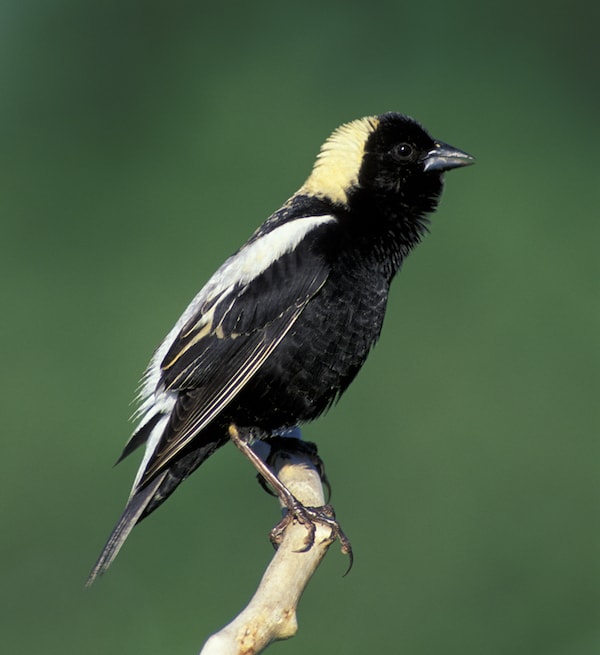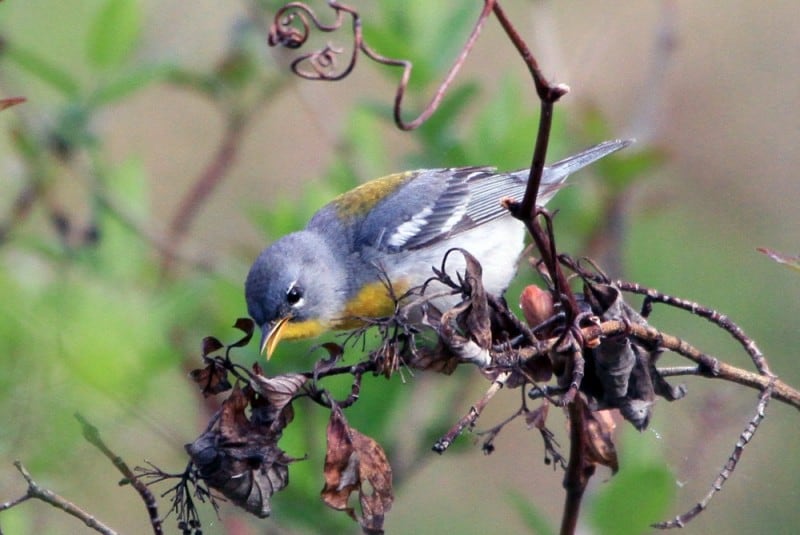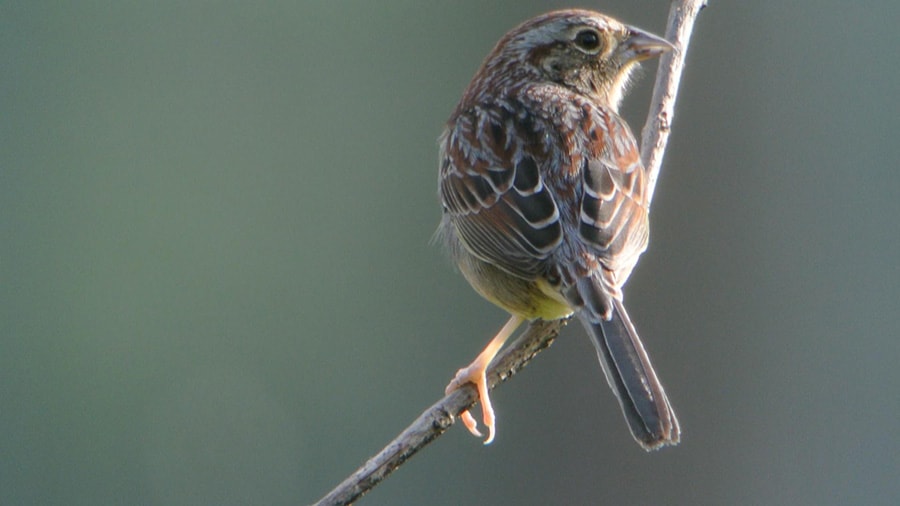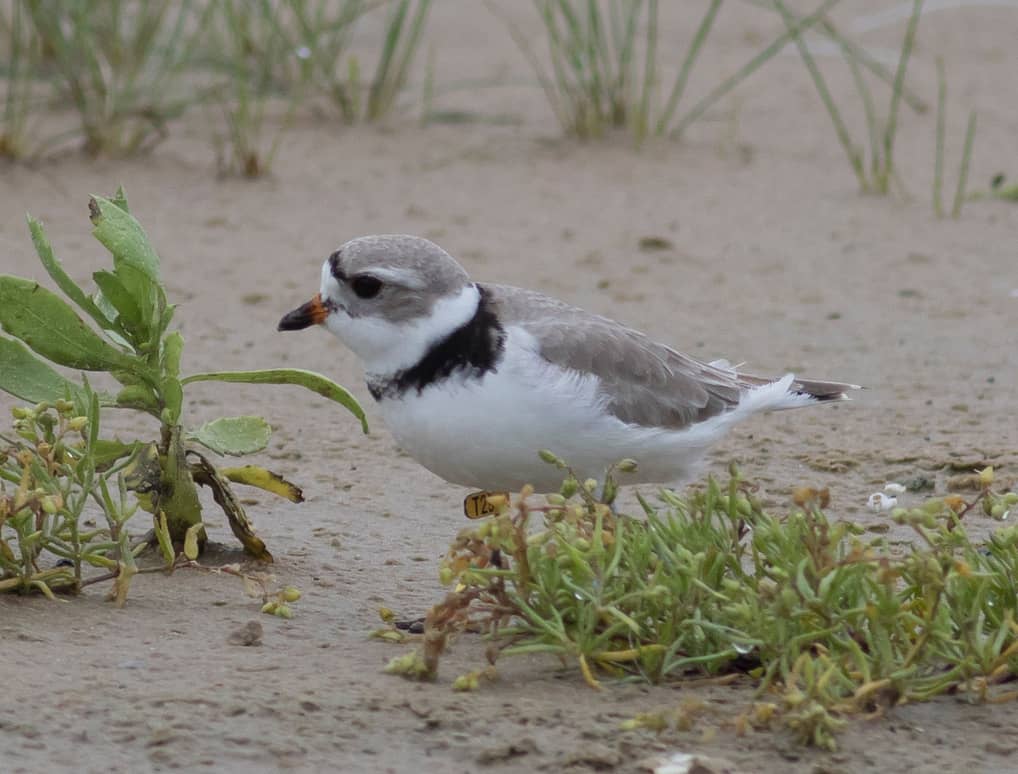Summer Birds of Wisconsin (June, July, August)
Summer is a time of commencement: as students move on to new endeavors, young birds make their first forays from the nest. And while school may be out and classes over, summer is prime time for studying resident bird populations—in Wisconsin and across the nation. In mid-June, a number of breeding bird surveys are conducted throughout the state, at a time when bird song is at its peak. In June, the North American Breeding Bird Survey (BBS), jointly sponsored by the USGS Patuxent Wildlife Research Center and the Canadian Wildlife Service, gathers data in Wisconsin and throughout the United States and southern Canada. Wisconsin has approximately ninety BBS routes, with volunteers recording all birds seen and heard from a number of assigned sites along the routes.
In northern Wisconsin, many bird watchers participate in the Nicolet National Forest Bird Survey, the longest running volunteer bird-monitoring program in a U.S. national forest. The survey was started in 1987 to provide important quantitative information about breeding birds in the northern part of the state. Volunteers work in teams with one or more group leaders who are experts in bird song identification. Since breeding bird surveys involve varied responsibilities, such as navigation and data recording, bird watchers of all levels are welcomed as volunteers.
Throughout the summer, volunteers also track common loon populations on the state’s lakes as part of Project LoonWatch. Loons are infrequent summer residents in the northern part of the state, but are often seen on the state’s inland terrain during spring migration. The loon population in Wisconsin is estimated to be about 2,000 birds, with the heaviest concentration of birds in Vilas and Oneida Counties. Summer loon observers are sometimes treated to the sight of young birds riding atop an adult, with both male and female providing ferry service.
On the opposite end of the state, Birding Blitz volunteers survey resident birds in the Bong State Recreation Area near Kenosha. Vesper sparrow, bobolink, sedge wren, horned lark, and upland sandpiper are among the grassland species that nest in Bong, named for Major Richard I. Bong, a Wisconsin native who was America’s leading air ace during World War II. The site had been designated to be a jet fighter base but the project was scratched three days before concrete was to be poured for a runway. The state bought the land in 1974 and it became the state’s first multiuse recreation area, providing habitat for grassland, wetland, and forest-loving birds.
Just miles from Bong and nestled along Lake Michigan, Chiwaukee Prairie is in full bloom by midsummer. A large number and variety of grassland songbirds nest in this lake plain prairie, a small remnant of the lowland tallgrass prairie that was once common in southeastern Wisconsin. On a summer day, you might hear meadowlarks and bobolinks, as well as numerous sparrow species.
Summer is a time of first flights for many of the state’s new avian residents. In the lower portion of Horicon Marsh, young great egrets and great blue herons fledge from nests in rookeries on Four Mile and Cotton Islands. The graceful birds are often seen south of State Highway 49, sometimes joined by large numbers of American white pelicans, ducks, and geese in the wetland expanses.
Throughout the state, young chimney swifts also take to the air during summer. Although usually associated with urban areas because of their propensity to nest in chimneys, they are also found in forested areas where they nest in tree stumps or on the walls of abandoned farm buildings. Whether nesting in a chimney or elsewhere, they use the same blueprint and materials. Swifts gather twigs while skimming treetops, then cement them to a smooth surface using saliva. These long-winged, stubby-bodied birds are sometimes referred to as “flying cigars.”
In late August, if you’re in the right place at the right time, you might see common nighthawks by the hundreds, or even thousands, zigzagging in a stream of birds. Bat-like in their flight patterns, nighthawks are often seen at dusk. Earlier in summer, these birds nest on flat rooftops in urban areas or on gravel or sandy patches in rural areas; listen for their distinctive pzeents on warm summer nights.
Whip-poor-wills, members of the same family, break the silence of early summer nights in select parts of the state by singing their names—again and again and again. By day, however, these camouflaged birds are difficult to find in their favored oak forest habitat. Whip-poor-wills and nighthawks belong to a group known as “goatsuckers,” so named because it was once believed the birds flew into barns at night and suckled from goats. The short-legged, wide-mouthed birds are insectivores and head southward in fall when insect populations become unpredictable.
Although fall migration may be far from the thoughts of most bird watchers during the dog days of summer, large numbers of birds are already on the move. Bobolinks and other blackbirds start flocking in July in preparation for their exodus from the state. By mid-July, the first shorebirds begin their southward trek.
By late summer, killdeer leave the state in small groups, the last of the state’s shorebirds to begin the journey south. The most common of Wisconsin’s six plover species, the killdeer is easily identified by its two black breast bands and its distinctive call. Killdeer nest on gravel parking lots, farm fields, and grassy park areas—all providing camouflage for their speckled eggs. If a person or animal approaches the nest, the adult killdeer leads the intruder away with a fine show of theatrics. The bird drags one wing on the ground, appearing injured , and spreads its tail to reveal a distracting rusty rump—all the while “crying” plaintively.
As the autumn equinox approaches, Wisconsin’s bird watchers prepare for the fall migrants soon to pass through the state. We say good-bye to summer, sometimes crying plaintively ourselves, and get ready for the next show.




